Brings all the students to the yard.
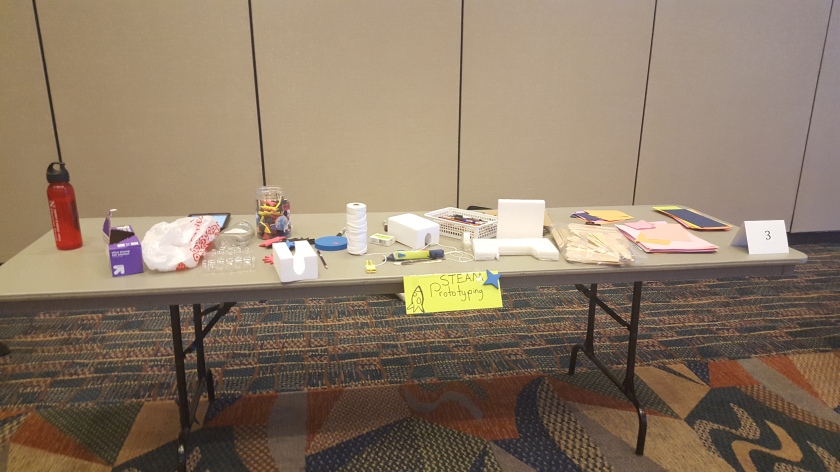
Okay, so maybe the play on words was a bit much, but Brandy and I had such a great time at the Nebraska Educational Technology Association’s (NETA) conference that I couldn’t resist. We signed up to be part of the “playground” at NETA and set out to give teachers a chance to prototype with rockets. The amazing part was that, unbeknownst to us, there were 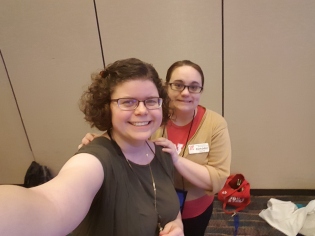 students attending the conference. It was the students who came to the booth and wanted to play with the recyclables. Of course, that was a happy surprise for us. We brought a bunch of materials, and expected to spend most of our time walking teachers through the process. But, when the students caught sight of our table, the discussion quickly changed to one of “look at what the students are doing”. The truly great part for me was having evidence of why this type of activity works. It is more than just students being entertained, or simply having a good time; both of which are important aspects of learning. The first group of students wanted to prototype something that would help students learn about they heart, so they pulled out their phones – not to Snapchat, or text their friends, but to look up a heart diagram to help them draw an anatomically correct heart.
students attending the conference. It was the students who came to the booth and wanted to play with the recyclables. Of course, that was a happy surprise for us. We brought a bunch of materials, and expected to spend most of our time walking teachers through the process. But, when the students caught sight of our table, the discussion quickly changed to one of “look at what the students are doing”. The truly great part for me was having evidence of why this type of activity works. It is more than just students being entertained, or simply having a good time; both of which are important aspects of learning. The first group of students wanted to prototype something that would help students learn about they heart, so they pulled out their phones – not to Snapchat, or text their friends, but to look up a heart diagram to help them draw an anatomically correct heart.
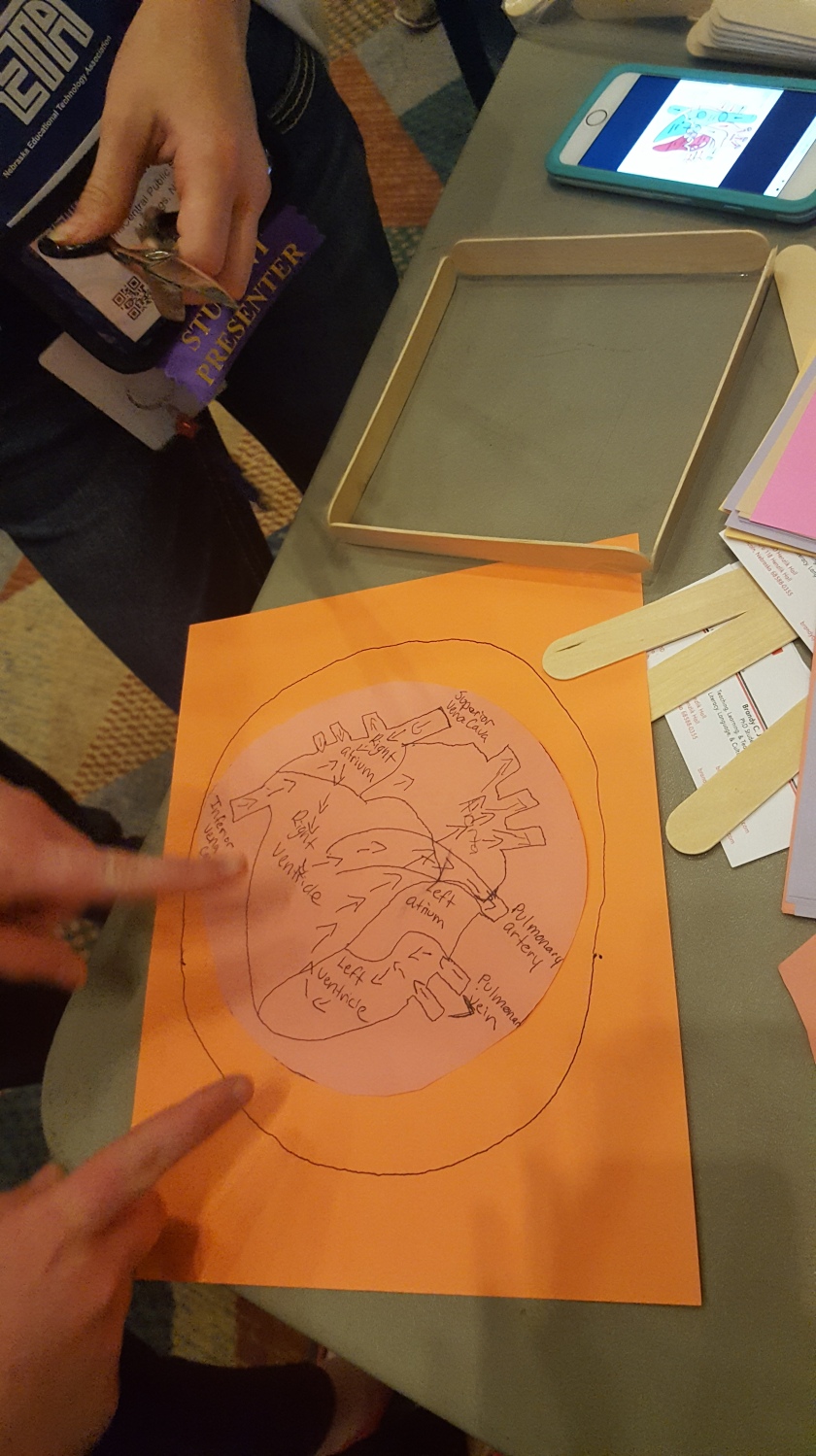
For me, this was a drop the mic moment because I felt like everything Brandy and I have been developing, thinking about and showing to educators at conferences was validated in this moment. Our booth, which stood out from the crowd due to its lack of tri-board, had a small crowd of students surrounding it. They wanted to hear about what all the “stuff” on the table was. They wanted to explore, they wanted to demonstrate their learning and knowledge.
It didn’t take much either. Our table was made up of a bunch of leftovers, a bunch of stuff K-12 teachers could find in the supply room, or bring from home by saving recyclable materials prior to having students engage in a prototyping activity. Or better, encourage students to bring recyclables from home, too. It’s such an easy way for students to demonstrate their knowledge and have an outlet for their creativity. 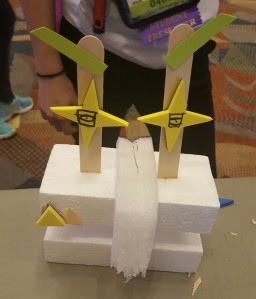 One of the other groups create a monster. When asked, the student told me the monster was angry because everyone thought the monster was scary, “but he isn’t”. I ran into the students later in the day and was quickly told of the monster’s untimely demise, but they quickly told me the monster had been photographed, so I assured them it wold live on in the digital universe. What I think is so powerful about this moment, is the lesson extended beyond the few moments these students spent at our booth. They remembered the activity, and their creation took on a life of its own. This is what creates lifelong learners. This is the power of an informal learning environment. This is science that engages.
One of the other groups create a monster. When asked, the student told me the monster was angry because everyone thought the monster was scary, “but he isn’t”. I ran into the students later in the day and was quickly told of the monster’s untimely demise, but they quickly told me the monster had been photographed, so I assured them it wold live on in the digital universe. What I think is so powerful about this moment, is the lesson extended beyond the few moments these students spent at our booth. They remembered the activity, and their creation took on a life of its own. This is what creates lifelong learners. This is the power of an informal learning environment. This is science that engages.

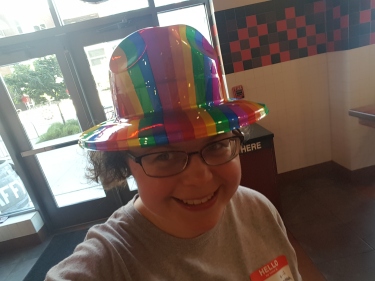 Friday night found us in the Railyard making paper airplanes with kids of all ages (and, even their parents). We also wore awesome hats. Our idea was simple: bring a ream of copy paper and have people show us their idea of what a paper airplane should look like. Through this, we engaged them in discussion about what the airplane does, what impact different designs have on the functions of the airplane. The idea starting from a place of “what do you want the airplane to do?” – having the participants decide the specific objectives. Then, working together to see how we could design and airplane to be faster, go further, flip. For those who had no idea how to make an airplane, we had a couple of stock designs to teach them.
Friday night found us in the Railyard making paper airplanes with kids of all ages (and, even their parents). We also wore awesome hats. Our idea was simple: bring a ream of copy paper and have people show us their idea of what a paper airplane should look like. Through this, we engaged them in discussion about what the airplane does, what impact different designs have on the functions of the airplane. The idea starting from a place of “what do you want the airplane to do?” – having the participants decide the specific objectives. Then, working together to see how we could design and airplane to be faster, go further, flip. For those who had no idea how to make an airplane, we had a couple of stock designs to teach them.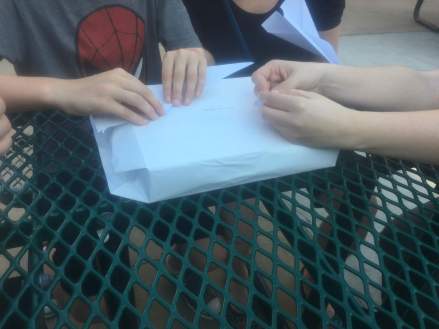
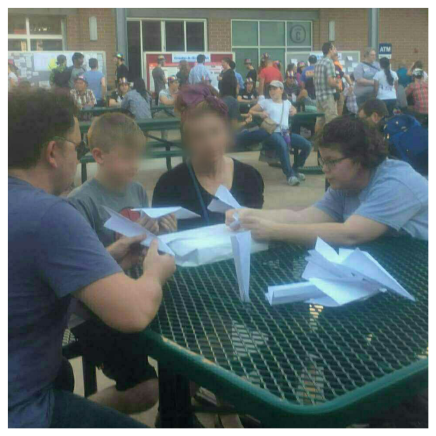
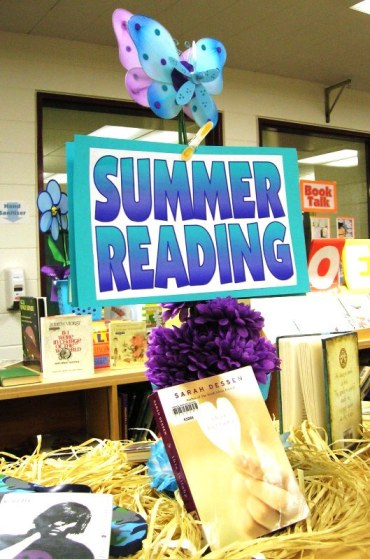 ‘m going to focus on the literacy part of science literacy for a moment because reading is vital to continued learning. As you’ll see in the the video below, it’s imperative that students continue their reading over the summer to ensure they maintain their skills. In the video,
‘m going to focus on the literacy part of science literacy for a moment because reading is vital to continued learning. As you’ll see in the the video below, it’s imperative that students continue their reading over the summer to ensure they maintain their skills. In the video, 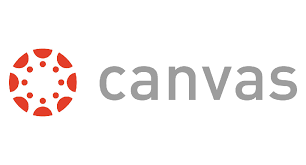 While I admit it might not seem as though this post aligns with the others, I feel that it is important to share useful technologies. I was asked a couple of week’s ago to talk about an app I really like using for teaching. This past semester, I joined a university wide pilot for the
While I admit it might not seem as though this post aligns with the others, I feel that it is important to share useful technologies. I was asked a couple of week’s ago to talk about an app I really like using for teaching. This past semester, I joined a university wide pilot for the 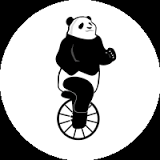 Here’s a Short List of Canvas Features I love:
Here’s a Short List of Canvas Features I love:
 students attending the conference. It was the students who came to the booth and wanted to play with the recyclables. Of course, that was a happy surprise for us. We brought a bunch of materials, and expected to spend most of our time walking teachers through the process. But, when the students caught sight of our table, the discussion quickly changed to one of “look at what the students are doing”. The truly great part for me was having evidence of why this type of activity works. It is more than just students being entertained, or simply having a good time; both of which are important aspects of learning. The first group of students wanted to prototype something that would help students learn about they heart, so they pulled out their phones – not to Snapchat, or text their friends, but to look up a heart diagram to help them draw an anatomically correct heart.
students attending the conference. It was the students who came to the booth and wanted to play with the recyclables. Of course, that was a happy surprise for us. We brought a bunch of materials, and expected to spend most of our time walking teachers through the process. But, when the students caught sight of our table, the discussion quickly changed to one of “look at what the students are doing”. The truly great part for me was having evidence of why this type of activity works. It is more than just students being entertained, or simply having a good time; both of which are important aspects of learning. The first group of students wanted to prototype something that would help students learn about they heart, so they pulled out their phones – not to Snapchat, or text their friends, but to look up a heart diagram to help them draw an anatomically correct heart.
 One of the other groups create a monster. When asked, the student told me the monster was angry because everyone thought the monster was scary, “but he isn’t”. I ran into the students later in the day and was quickly told of the monster’s untimely demise, but they quickly told me the monster had been photographed, so I assured them it wold live on in the digital universe. What I think is so powerful about this moment, is the lesson extended beyond the few moments these students spent at our booth. They remembered the activity, and their creation took on a life of its own. This is what creates lifelong learners. This is the power of an informal learning environment. This is science that engages.
One of the other groups create a monster. When asked, the student told me the monster was angry because everyone thought the monster was scary, “but he isn’t”. I ran into the students later in the day and was quickly told of the monster’s untimely demise, but they quickly told me the monster had been photographed, so I assured them it wold live on in the digital universe. What I think is so powerful about this moment, is the lesson extended beyond the few moments these students spent at our booth. They remembered the activity, and their creation took on a life of its own. This is what creates lifelong learners. This is the power of an informal learning environment. This is science that engages.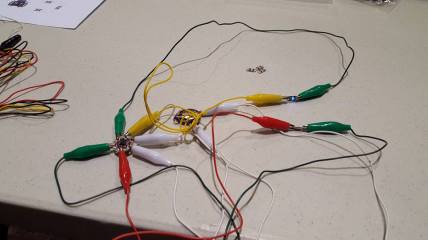
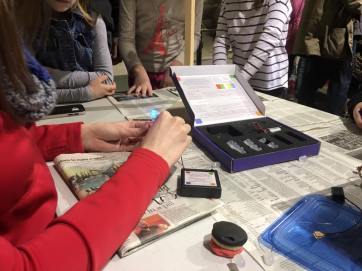 The dough functioned as wire, allowing younger kids, especially ones with less find motor skills a hands on experience with circuits.Kids were able to explore how pressing the various types of dough together would either allow the current to flow, or prevent the current from flowing. Batteries were once again used to power the the LED lights, and kids learned the difference between positive and negative power affect the flow of electricity.
The dough functioned as wire, allowing younger kids, especially ones with less find motor skills a hands on experience with circuits.Kids were able to explore how pressing the various types of dough together would either allow the current to flow, or prevent the current from flowing. Batteries were once again used to power the the LED lights, and kids learned the difference between positive and negative power affect the flow of electricity.
 Working in groups gave them the opportunity to collaborate, to combine their ideas in order to come to the best possible solution. Of course, some kids were more resistant than others to group work, some wanting to make their own rockets. The thought behind the recyclables was to also expose kids to the idea of reusable materials, showing them how to reuse everyday household items for creative purposes. For educators, the recyclables are a way to keep the cost of the activity to a minimum, and allow students to be active in the cultivation of materials for the lesson.
Working in groups gave them the opportunity to collaborate, to combine their ideas in order to come to the best possible solution. Of course, some kids were more resistant than others to group work, some wanting to make their own rockets. The thought behind the recyclables was to also expose kids to the idea of reusable materials, showing them how to reuse everyday household items for creative purposes. For educators, the recyclables are a way to keep the cost of the activity to a minimum, and allow students to be active in the cultivation of materials for the lesson.
 Days after Thanksgiving 2015, Zoe and I came to the Lincoln Children’s Museum to present our first collaborative workshop—and to learn more about the population the museum serves. The museum has been undergoing extensive renovations, including the introduction of a multi-story functional build-it-yourself
Days after Thanksgiving 2015, Zoe and I came to the Lincoln Children’s Museum to present our first collaborative workshop—and to learn more about the population the museum serves. The museum has been undergoing extensive renovations, including the introduction of a multi-story functional build-it-yourself 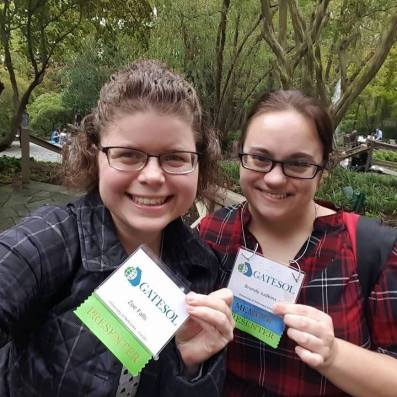 This past October, Zoe and I were able to bring our universally designed science lessons to the 2015 GATESOL conference in Atlanta, Georgia. This enabled us to share our work with fellow teachers, primarily ESL teachers, for the first time. At the conference, we presented on our middle school lesson. This lesson integrates Nearpod into a solar system focused astronomy lesson.
This past October, Zoe and I were able to bring our universally designed science lessons to the 2015 GATESOL conference in Atlanta, Georgia. This enabled us to share our work with fellow teachers, primarily ESL teachers, for the first time. At the conference, we presented on our middle school lesson. This lesson integrates Nearpod into a solar system focused astronomy lesson.